Blow to Bauska. 1916 year
Bauska (Bauska) is a city in Latvia (66 km south of Riga), in the direction of which 03 - 09. 07. 1916 g. During the summer campaign of 1916 g. Developed the offensive of the attack group of the 12-th army of the Northern Front.
In the 1916 campaign, the Northern Front was assigned a supporting role. The meeting at Headquarters on April 1 on November 1916 decided that the main blow was inflicted by the armies of the Western Front with the assistance of the troops of the Northern and Southwestern Fronts.
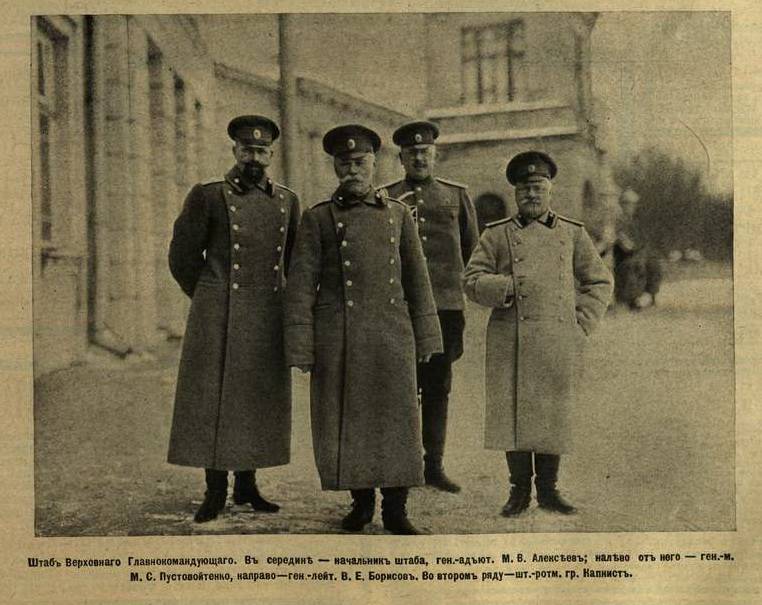
The western front was supposed to attack towards Vilna. The Northern Front, having launched an offensive also on Vilna (from the northeast), should have supported the operations of the Western Front. Already at this meeting, from the commander in chief of the armies of the Northern Front, from the infantry A.N. Kuropatkin, a statement followed that, with strongly strengthened German positions, it is difficult to hope for a breakthrough of the enemy front, and that large losses are likely, especially in a situation of lack of ammunition of heavy artillery.
The Northern Front and its adversary
At the first, most important stage of the Offensive 1916 g. (May - June), the Northern Front was inactive. During this period, it was a reservoir (the balance of enemy forces in the northern strategic direction allowed this) to build up the human and material resources of the South-Western Front - the front was instructed to carry out demonstration actions and be ready to send reinforcements to the south.
At the same time, Head of the General Staff Headquarters, infantry general M.V. Alekseev recommended A.N. Kuropatkin to disturb the enemy on the Riga coast with the help of the Baltic forces fleet. A project began to be developed for a combined or joint (i.e., land-sea) operation of the Northern Front and the Baltic Fleet. The advocates of this idea were the proponent of active offensive operations, the commander of the 12th Army, infantry general R. D. Radko-Dmitriev and the commander of the Baltic Fleet, Vice Admiral V. A. Kanin.
On June 23, the Northern Front was given the task of delivering a strike that forced the Germans to leave the border of the river. Western Dvina. Realization of the task was assigned to the 12 Army of R. D. Radko-Dmitriev. Accordingly, this army was supposed to deliver the main blow. The army task is to strike from the left flank of the Riga bridgehead, break through enemy positions, taking possession of the Ekkau - Neigut border, and get off at the Mitava - Jakobstadt railway.
The army’s positions at the beginning of the summer campaign were as follows: the 6th Siberian Army and the 43th Army Corps stood on the left bank of the river. Western Dvina (Berzemunde - Lake Kanger); 37 Army Corps was located on the right bank of the river (to Rinemundshof); in the reserve (Riga) stood the 7 Siberian Army Corps, and the Ussuri Horse Division was concentrated south of the city of Venden. Thus, the main group is aimed at the Tukkum direction.
The 12 Army included the 183 battalion, 60 squadrons and hundreds. The enemy (formations and units of the German 8 Army and Army Group of the Artillery General F. von Scholz) counted 50 - 62 battalion and 39 squadrons. The main forces were held by the opponents on the Riga bridgehead (149 battalions and 12 Russian squadrons against 38 - 50 battalions and 38 German squadrons). But it should be noted here that any serious operation of the Northern Front was associated with a breakthrough in defense in depth. Formally necessary in this classic balance of forces in favor of the advancing 3 to 1, indicated above, theoretically allowed us to hope for success, if not for the lack of heavy guns and (especially) ammunition for them.
From a promising combined operation to an attack on Bauska
The beginning of the offensive was scheduled for July 3. During this period, M.V. Alekseev again turned to A.N. Kuropatkin - advising him to use the means proposed by the fleet in order to combine the breakthrough at Riga with the landing operation in the rear of the German group in Kurland.
There were 2 promising directions for the actions of the troops of the Northern Front: 1) from Riga to Tukkum, Mitau or Bauska, and 2) from Dvinsk to Ponevezh or Vilna.
The first option was recognized as the most promising - the operation was inevitably associated with a breakthrough in defense, but the breakthrough was to be carried out at the left flank of the enemy’s front. This gave hope - by the actions of the landing, landed on the west coast of the Gulf of Riga, to facilitate the success of the breakthrough.
The strike was considered optimal in the Mitavsky or Tukkum regions by the troops of the 12 Army, reinforced, if necessary, by units of the 1 Army and 5 Army. A.N. Kuropatkin ordered to advance on Bauska - if successful, the Russian troops entered the communications of the 8 Army and the Scholz group. The problem was the difficulty of a breakthrough in a positional war.
To facilitate a breakthrough and was supposed to landing in the 2-x divisions and cavalry brigades. When breaking through the enemy’s layered defense, any weakening of the German group by diverting his attention to other areas was advisable.
The most important issue was the issue of coordinating the efforts of the landing force and the breaking forces of the 12 Army.
The direction of the main attack chosen by the command of the Northern Front towards Bausk did not favor the joint actions (as they were understood by A.N. Kuropatkin) of the strike group and the landing forces.
Disagreement and items for landing. Theoretically, the landing site was to withdraw the landed troops on the flank and rear of the left-flank group of German troops. The command of the Northern Front saw the Kestercem area as such a point. But this caused vigorous objections from the naval command, which indicated that the landing in this area was difficult due to the presence of strong enemy coastal batteries and minefields on the coast. It was not possible to shorten the fence under the cover of coastal batteries in a short time - and this excluded the landing of troops.
The Baltic Fleet Commander proposed to land at Roen: “as a point on the coast, possessing, albeit small, but port facilities, which will greatly facilitate the production of landings and will make it possible to establish a reliable supply… landing at Roen ... is also preferable to other places on the coast because being remote from the northern flank of the enemy’s location, it allows troops to attack both south and west, across the paths from Vindava and the coast to Tukum. ”
In fact, the command of the Baltic Fleet proposed expanding the importance of tactical landing operations to a strategic scale - that is, operating in the deep rear of the German left flank, in the direction from Roen to Vindava.
Thus, the genesis of the airborne operation took place - from a demonstrative sortie aimed at forcing the Germans to disperse their forces along the entire Riga coast and thereby weaken themselves in the direction of the main attack of the 12 Army, to the idea of a strategic landing. It became apparent that not a sea demonstration, but only a full-fledged landing operation could adequately contribute to the efforts of the 12 Army.
But, given the fact that the points of application of the main efforts of the army and the landing were too distant, the command of the army and navy actually refused to coordinate the tactical actions of the landing and the 12 army. The main blame for this lies with A. N. Kuropatkin, who did not believe in the success of the landing, and with the High Command, which had withdrawn from conducting the combined operation. A.N. Kuropatkin did not see the possibility of interaction between the troops that carried out a breakthrough east of Mitawa and the landing at Roen. The front commander even suggested that the landing be carried out as an independent operation - in this case, the very idea of a joint operation was lost.
In the end, it was only stipulated that the landing should coordinate its actions with the tactical achievements of the advancing troops.
It turned out to be a vicious circle - the infantry breakthrough was difficult without distracting the enemy forces with the landing force, and if the breakthrough failed, the landing would die.
However, the landing forces began preparations for the operation. It should be noted that it was the attack on Roen that attached the operational-tactical significance to the landing operations - not always (which the "old defeatist" A.N. Kuropatkin did not understand) to achieve success, shoulder-to-shoulder interaction of the troops is necessary. The presence of a bridgehead on the flank of the German group, or even the threat of such a bridgehead, should have significantly affected the operations of the 12 Army.
But the planned operation was never carried out. Initially, due to the unavailability of forces intended for landing. In the future - due to the change of command of the front and the shift of attention of the High Command to the south-western and Romanian strategic directions.
The main blow during the July offensive of the 12th Army on Bauska was to be delivered by the 3th Siberian Rifle Division of the 6th Siberian Army Corps (the actions of the 1th Brigade, Major General V.V. Ivashkevich were given key importance), supported by the 1th Brigade 5-th Siberian Rifle Division (commander Major General G. G. Khilchenko) 2-th Siberian Army Corps, and 6-m and 7-m Latvian Rifle Battalions. A.N. Kuropatkin, a weak tactician and strategist, was an excellent administrator — he personally appeared at the command post of the army and oversaw the supply of ammunition to the advancing troops and the provision of reserves for the operation.
Beginning of the offensive
On the 3 of July, after a three-hour artillery preparation that did not give positive results, the offensive began. Heavy tactical battles ensued in the tactical defense zone of the German troops. Attacks of Russian shooters interspersed with renewed artillery fire. The Germans constantly counterattacked. The Headquarters summary reported: “On the right flank of the Riga position, with the assistance of land artillery and navy fire, our troops advanced somewhat ahead in the area west of Kemmern.” Quartermaster General of the German Eastern Front, M. Hoffmann, wrote in his diary from the 5 of July: “Yesterday, the Russians and we were advancing towards Mitau. So far, everything has been beaten off. ”
By the 7 number, the strike group managed to reach the turn of the river. Kekkau - high. 218.
During the period of positional hostilities, the breakthrough organization technique was of particular importance. So, artillery preparation in the attack zone of the strike group of the 8 of July included: 1) 4-hour (from 12 to 16 hours) methodical artillery fire of both heavy and light artillery, designed to destroy enemy defenses (trenches, blockhouses, dugouts), as well as punching passages in wire fences; 2) sentry (from 16 to 17 hours) harassing fire at defensive structures; under the cover of this fire, bombers were operating who mined wire fences, as well as scouts; 3) barrage (started after 17 hours); infantry attacked under his cover. The infantry attack was echeloned in the form of waves of chains. The advancing regiment of the 2 battalion had in the 1 line, and 2 of the other battalion in the second. The issue of securing the captured positions was given special attention.
The actions of the enemy, who had extensive experience in trench warfare, greatly complicated the already difficult situation. So, during the breaks during the offensive and at night, the Germans built new blockhouses and trenches.
We previously wrote about the severity of the offensive during a positional war in an environment of complicated terrain. And the events in question serve as a perfect example. So, on the 8 of July, Russian artillery managed to break through passages in the 7 wire barriers, but the enemy’s trenches and blockhouses were not badly damaged. Had to destroy in some places and wire fences. Moreover, bombers-sappers suffered heavy losses from enemy fire. Especially constrained the actions of the shooters of the 9-th Siberian regiment dugouts, which were disguised in the swamp.
The ending should ...
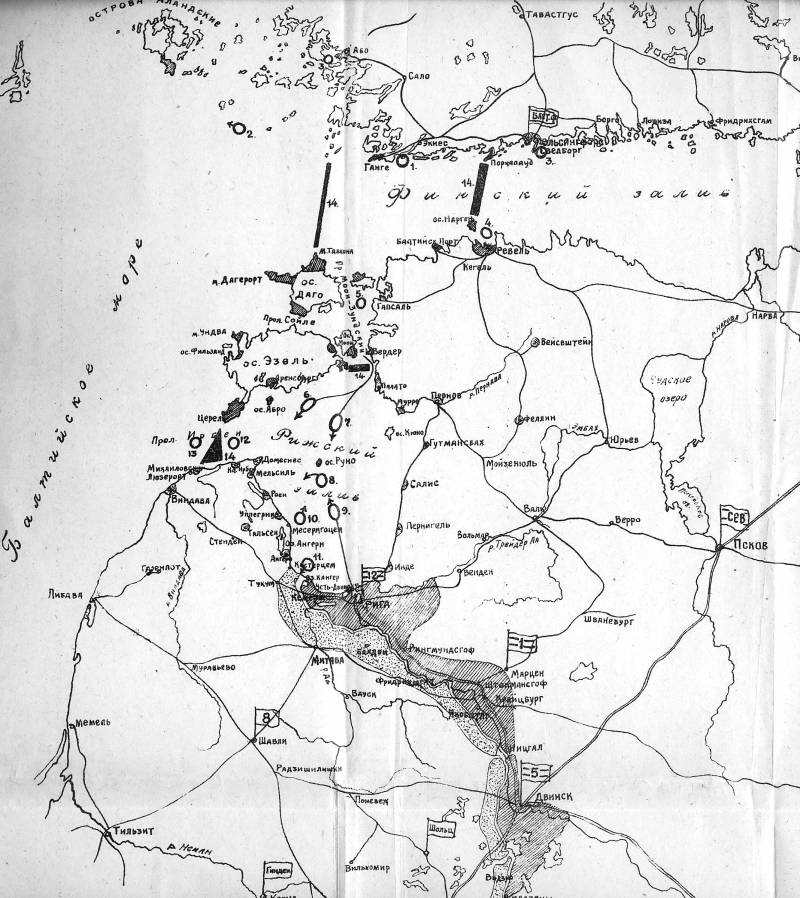
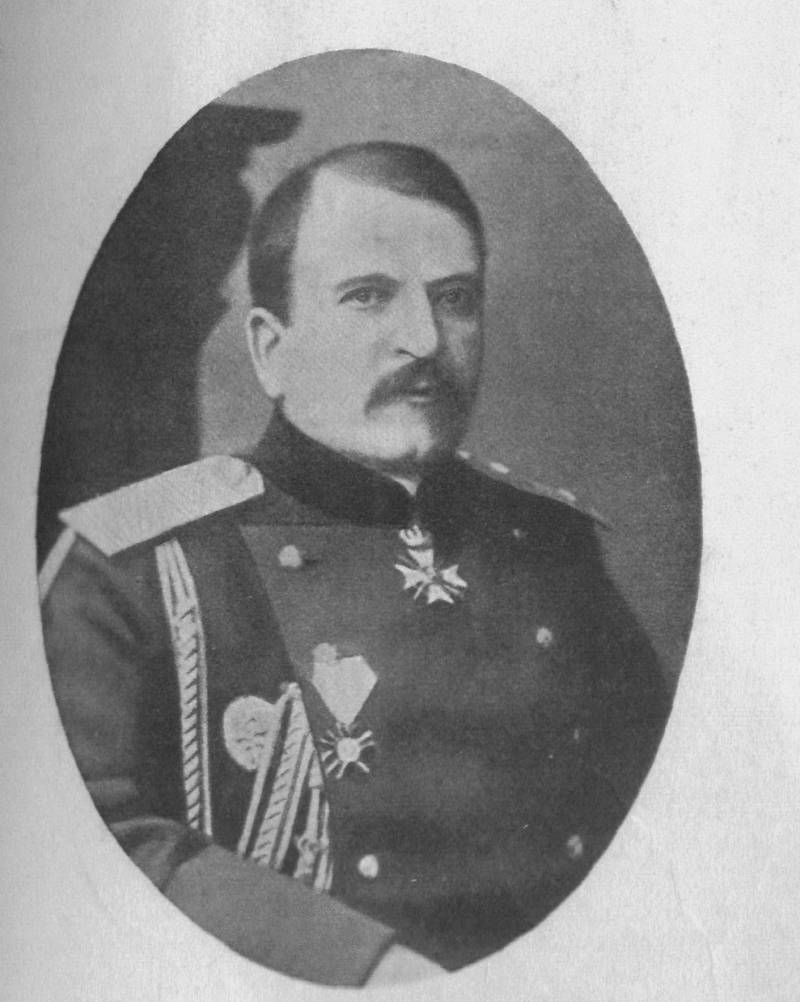
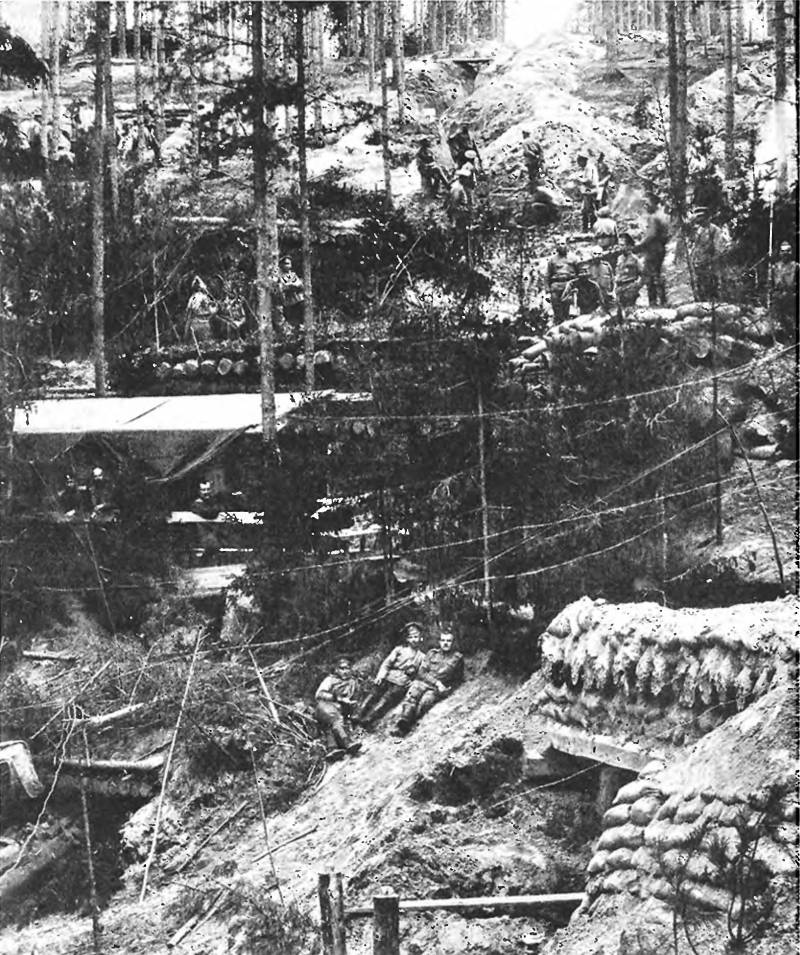
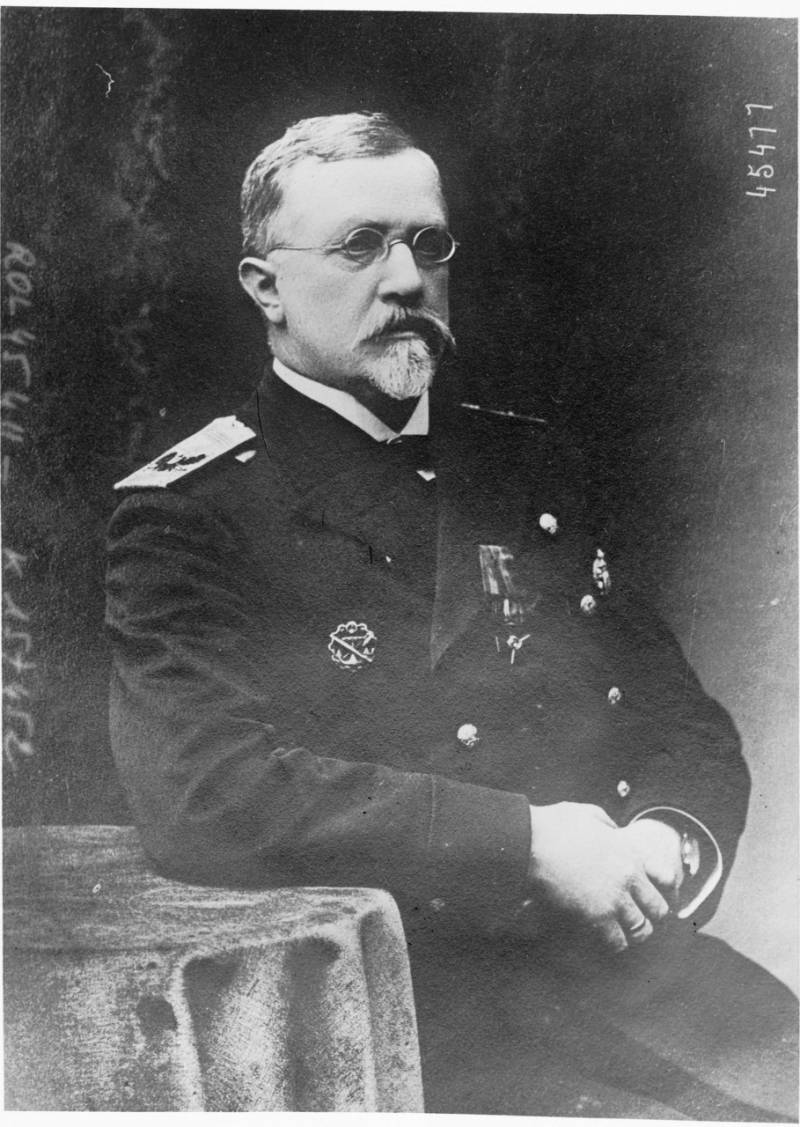
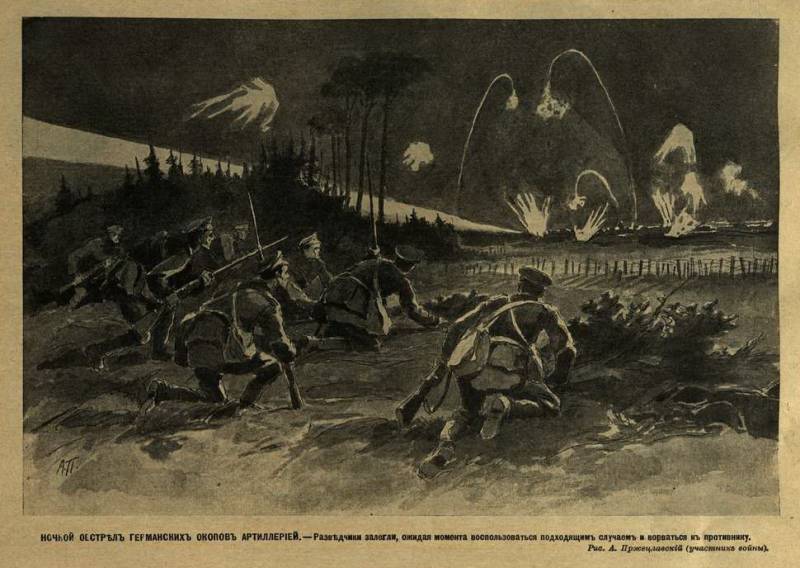
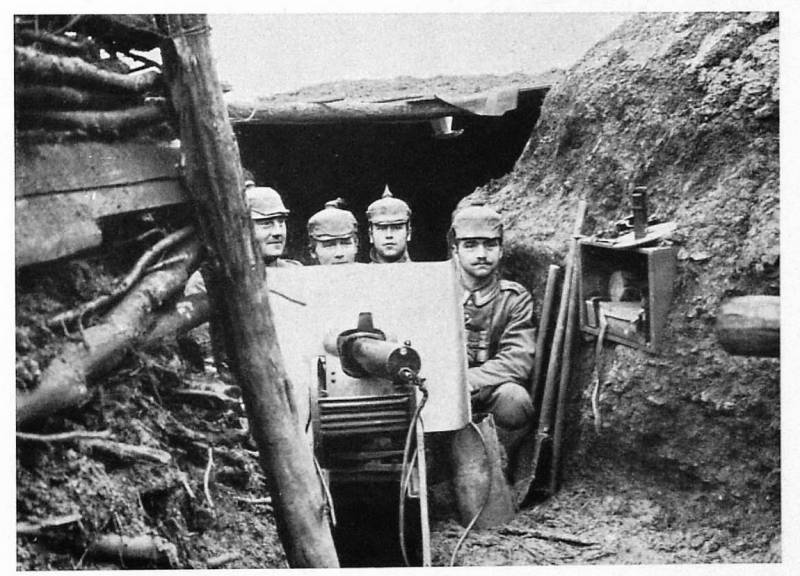
Information